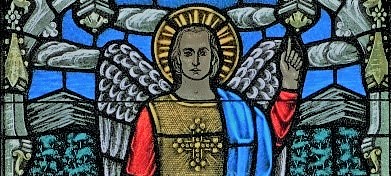In the celebration of the Eucharist, the glorified Christ becomes present under the appearances of
bread and wine in a way that is unique, a way that is uniquely suited to the Eucharist. In the Church’s
traditional theological language, in the act of consecration during the Eucharist the “substance” of
the bread and wine is changed by the power of the Holy Spirit into the “substance” of the Body and
Blood of Jesus Christ. At the same time, the “accidents” or appearances of bread and wine remain.
“Substance” and “accident” are here used as philosophical terms that have been adapted by great
medieval theologians such as St. Thomas Aquinas in their efforts to understand and explain the faith.
Such terms are used to convey the fact that what appears to be bread and wine in every way (at the
level of “accidents” or physical attributes – that is, what can be seen, touched, tasted, or measured)
in fact is now the Body and Blood of Christ (at the level of “substance” or deepest reality). This
change at the level of substance from bread and wine into the Body and Blood of Christ is called
“transubstantiation”. According to Anglican-Catholic faith, we can speak of the Real Presence of
Christ in the Eucharist because this transubstantiation has occurred. This is a great mystery of our
faith—we can only know it from Christ’s teaching given us in the Scriptures and in the Tradition of
the Church. Every other change that occurs in the world involves a change in accidents or
characteristics. Sometimes the accidents change while the substance remains the same. For example,
when a child reaches adulthood, the characteristics of the human person change in many ways, but
the adult remains the same person—the same substance. At other times, the substance and the
accidents both change. For example, when a person eats an apple, the apple is incorporated into the
body of that person—is changed into the body of that person. When this change of substance
occurs, however, the accidents or characteristics of the apple do not remain. As the apple is changed
into the body of the person, it takes on the accidents or characteristics of the body of that person.
Christ’s presence in the Eucharist is unique in that, even though the consecrated bread and wine
truly are in substance the Body and Blood of Christ, they have none of the accidents or
characteristics of a human body, but only those of bread and wine.


